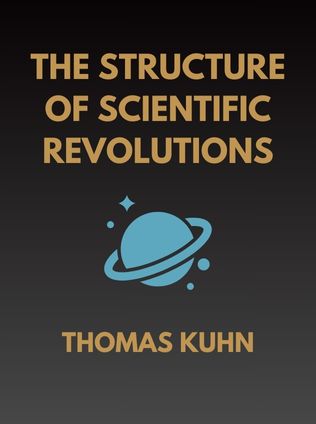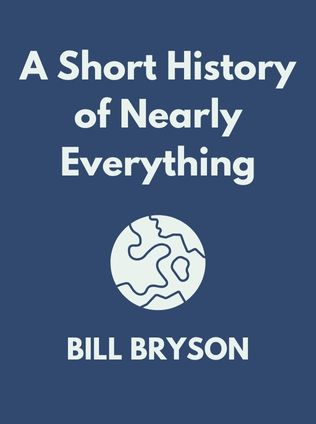
About the Author
Thomas Samuel Kuhn was an American physicist, historian, and philosopher of science, most renowned for his pivotal work, The Structure of Scientific Revolutions. Born on July 18, 1922, in Cincinnati, Ohio, Kuhn's academic journey led him from the study of physics at Harvard University, where he earned his bachelor's, master's, and Ph.D., to an interest in the history of science. It was during his time teaching a course on science history that Kuhn began to conceptualize the ideas that would later form the foundation of his most famous book. His work revolutionized the way we think about the development of scientific ideas, introducing concepts like "paradigm shifts" and "scientific revolutions" that have since become part of the lexicon of science and philosophy.
Kuhn's career included teaching at institutions such as Harvard, Berkeley, Princeton, and MIT, where he influenced a generation of scholars with his radical ideas. Despite initially studying physics, Kuhn found his true passion in understanding how scientific knowledge evolves. His interdisciplinary approach, blending physics, history, and philosophy, allowed him to view science through a unique lens, challenging the prevailing notion that science progresses in a linear, cumulative manner. Instead, Kuhn argued that scientific progress occurs through a series of revolutions, where an existing framework or "paradigm" is replaced by a new one that better explains the data.
Main Idea
The central thesis of The Structure of Scientific Revolutions is that scientific progress is not a smooth, continuous accumulation of knowledge, but rather a series of disruptive transformations Kuhn calls "paradigm shifts." These shifts occur when anomalies—observations or problems that cannot be explained by the current paradigm—accumulate, leading to a crisis in the scientific community. When a new paradigm is proposed that better explains the anomalies and can support further research, a scientific revolution occurs, fundamentally altering the way scientists view and investigate the world.
Kuhn's ideas challenge the traditional view that science is a steady, cumulative process that builds upon previous knowledge. Instead, he argues that periods of "normal science," where the scientific community works within an accepted framework, are punctuated by revolutionary shifts that overthrow existing paradigms. These paradigm shifts are not simply the result of new discoveries but involve a complex interplay of social, psychological, and historical factors. Kuhn's work suggests that science is inherently subjective, as the acceptance of a new paradigm often depends as much on the persuasiveness and charisma of its proponents as on the empirical evidence.
Table of Contents
- Introduction: A Role for History
- The Route to Normal Science
- The Nature of Normal Science
- The Priority of Paradigms
- Anomaly and the Emergence of Scientific Discoveries
- The Crisis of Anomalies
- The Response to Crisis
- The Nature and Necessity of Scientific Revolutions
- Revolutions as Changes of World View
- The Invisibility of Revolutions
- The Resolution of Revolutions
- Progress Through Revolutions
- Postscript – 1969
Introduction: A Role for History
Kuhn begins by emphasizing the importance of history in understanding scientific progress. He argues that without a historical perspective, we cannot fully comprehend the nature of scientific development. This is because the process of scientific discovery is not merely about accumulating data and refining theories but is deeply influenced by the social and cultural contexts in which scientists operate. Kuhn's approach to the history of science is thus a departure from the traditional view that sees science as a straightforward march towards truth.
"The historian of science may be tempted to exclaim that when paradigms change, the world itself changes with them." - Thomas S. Kuhn
This quote highlights the profound impact that scientific revolutions have on our understanding of the world. According to Kuhn, a paradigm shift does not just change the scientific theories we use but fundamentally alters our perception of reality. For example, the shift from Newtonian mechanics to Einsteinian relativity changed not only our understanding of space and time but also the very framework within which scientific inquiry was conducted.
The Route to Normal Science
Normal science, as Kuhn describes it, is the routine work of scientists experimenting within the bounds of the current paradigm. It involves puzzle-solving within an established framework, where the rules of the game are already known, and the objective is to extend the paradigm's reach. Kuhn argues that during periods of normal science, scientists are not seeking to overturn the existing paradigm but are instead working to solidify and extend it.
"Normal science does not aim at novelties of fact or theory and, when successful, finds none." - Thomas S. Kuhn
This quote encapsulates the essence of normal science. Scientists during this phase are focused on problem-solving rather than groundbreaking discoveries. They are engaged in a collective effort to refine and elaborate on the existing paradigm, often through meticulous experimentation and observation.
Sign up for FREE and get access to 1,400+ books summaries.




















